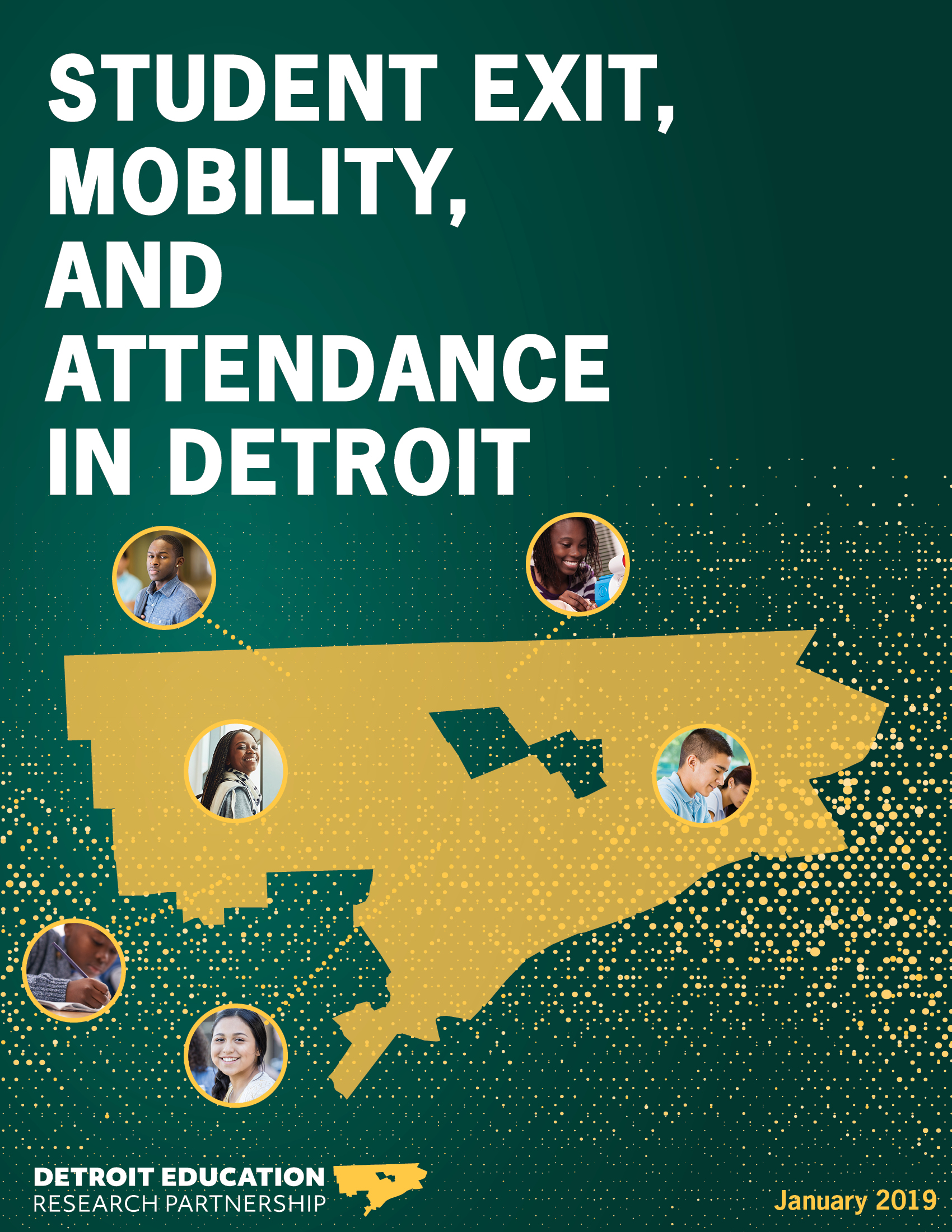Research Type: Policy Report
Teacher Recruitment, Retention, and Racial Composition in Detroit
Over the past few years, teacher recruitment and retention have become more difficult in Michigan, especially in the state’s highest-need districts. At the same time, the Detroit Public Schools Community District (DPSCD) has substantially reduced large annual teacher vacancies. The district’s strategies to hire and retain teachers have included increased teacher compensation, improved working conditions, and a “Grow Your Own” program. How does teacher recruitment and retention in DPSCD compare to Detroit charter schools and other districts in metro Detroit? And over time, to what extent has the racial composition of the teachers changed in Detroit and the metro area? We answer these questions through an analysis of longitudinal state administrative records on teachers and teaching positions in metro Detroit, for the 2016-17 through 2022-23 school years.
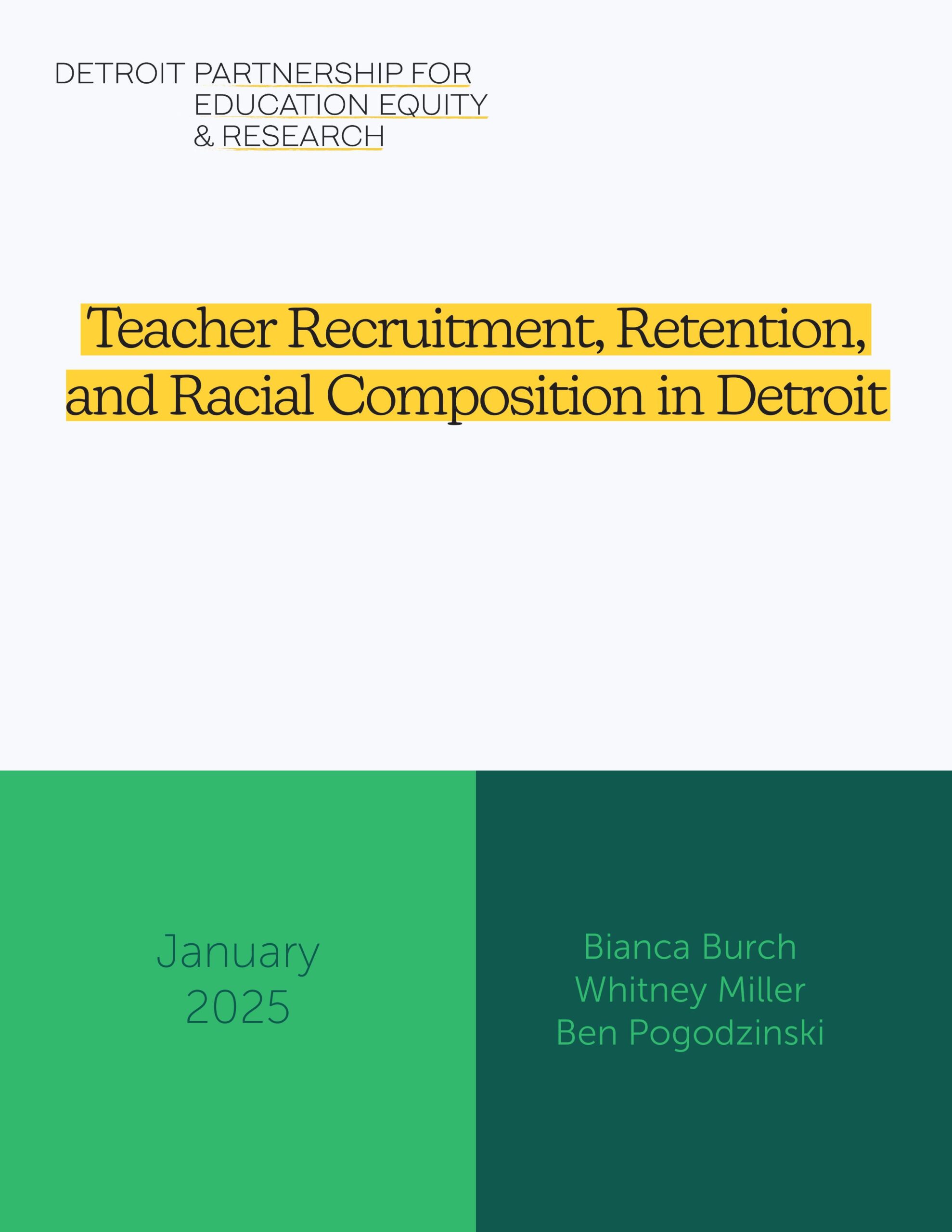
How Has Attendance in Michigan Changed Since the COVID-19 Pandemic?
This brief provides a closer look at how chronic absenteeism and average attendance rates have changed in Michigan since the pandemic.

The Role of School- Based Transportation in School Choice: Evidence from Detroit
In school choice systems, many families face geographic constraints. Yet, there is limited evidence on the association between school-based transportation and students’ school choice, especially in fragmented transportation contexts. Using unique data on Detroit kindergarten students’ eligibility and access to school-based transportation, we find that students with access to a bus at a school—either a traditional or shuttle-style bus—were 4-5 percentage points more likely to enroll in that school. The association was greater for traditional buses in higher-crime neighborhoods and for shuttle-style buses for farther-away choices. We did not find that this association differed by block-group-level household car ownership. Our findings suggest that school-based transportation can increase school choice access, depending on policy design and contextual factors. This report was co-published with the National Center for Research on Education Access and Choice (REACH).

Detroit’s Educational Outcomes and Opportunities Across Race and Gender
Contemporary education policy is dominated by narrow representations of student data, resulting in a limited understanding of school inequalities. This study aims to show how educational outcomes and opportunities are differentially experienced when race and gender are simultaneously accounted for in Detroit. Analyzing educational outcomes and opportunities for students who live in Detroit, we examine differences by race and gender in areas such as math and reading achievement, high school graduation, chronic absenteeism, access to advanced coursework in high school, and special education.

A Stable Place to Live and Learn: Why Detroit Housing Policy Is Critical to the Success of City Schools
This report was made in collaboration with Poverty Solutions at UM. It was created in order to better understand opportunities to address housing instability among Detroit’s families in a manner that meets the educational needs of children. This brief analyzes interviews with 20 parents identified as homeless or housing unstable and the responses of more than 1,400 Detroit parents who responded to a January 2022 survey conducted by Wayne State University’s Detroit Partnership for Education Equity & Research (Detroit PEER). Themes are discussed and policy recommendations based on innovations in other cities are presented.

Detroit Schools Severely Under-Identify Students Experiencing Homelessness and Housing Instability
In this policy brief in partnership with Poverty Solutions at UM and MSU's College of Education, we provide clear evidence that Detroit schools under-identify students experiencing homelessness and housing instability, and we identify ways that schools and districts can improve identification.

Detroit Parents’ Attitudes on COVID-19 Prevention Strategies in School
This report summarizes key findings from a representative survey of Detroit parents of K-12 students fielded in January 2022. By examining Detroit parents’ support for quarantine, masking, vaccine mandates, and remote learning policies in schools alongside specific pandemic-related hardships, we were able to identify the degree to which these barriers shaped a given household’s support for each policy. We hope this research informs the development of school health measures that will ensure equitable educational access as the pandemic continues into this school year.

Detroit Families’ Experiences with COVID-19 and School Attendance
How much school students attend is a powerful indicator of their wellbeing and a strong predictor of their future success in school. During the first full school year of the COVID-19 pandemic (2020-21), most Detroit students attended school online and many experienced significant challenges at home and school. This research report summarizes the key findings from a representative survey of Detroit Public Schools Community District (DPSCD) families at the end of that school year. By linking survey responses to students’ attendance records, we were able to identify how experiences during the pandemic and socioeconomic circumstances in general shaped attendance during this critical school year.
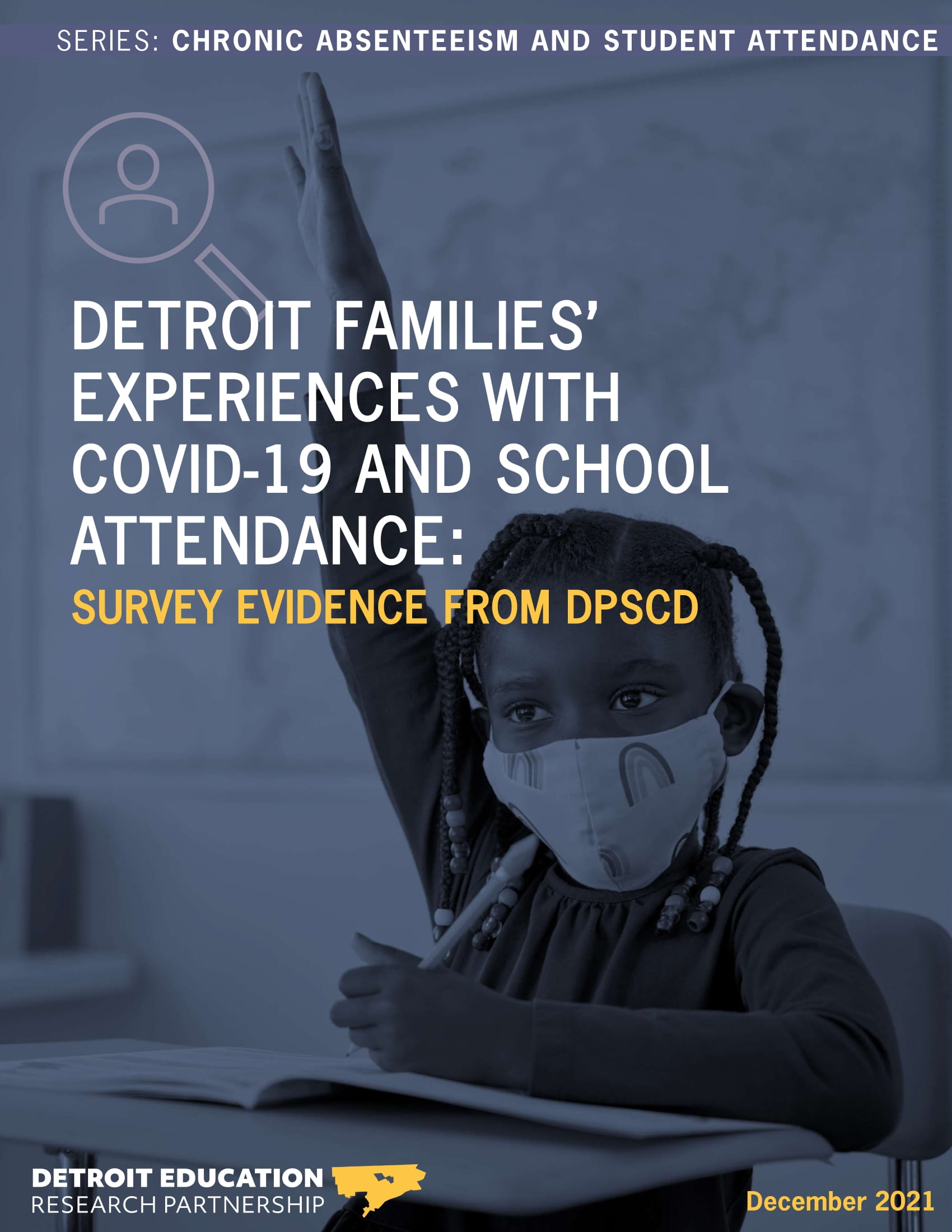
Third Grade Reading and Attendance in Detroit
Potential student retention under the Read by Grade Three Law is a critically important issue to better understand and address in Detroit. Detroit students have historically been retained at much higher rates than their suburban peers. Nearly 15% of Detroit third graders would have been subject to retention under the Third Grade Reading law had it been in effect in previous years. There is a significant relationship between third grade reading scores and chronic absenteeism.
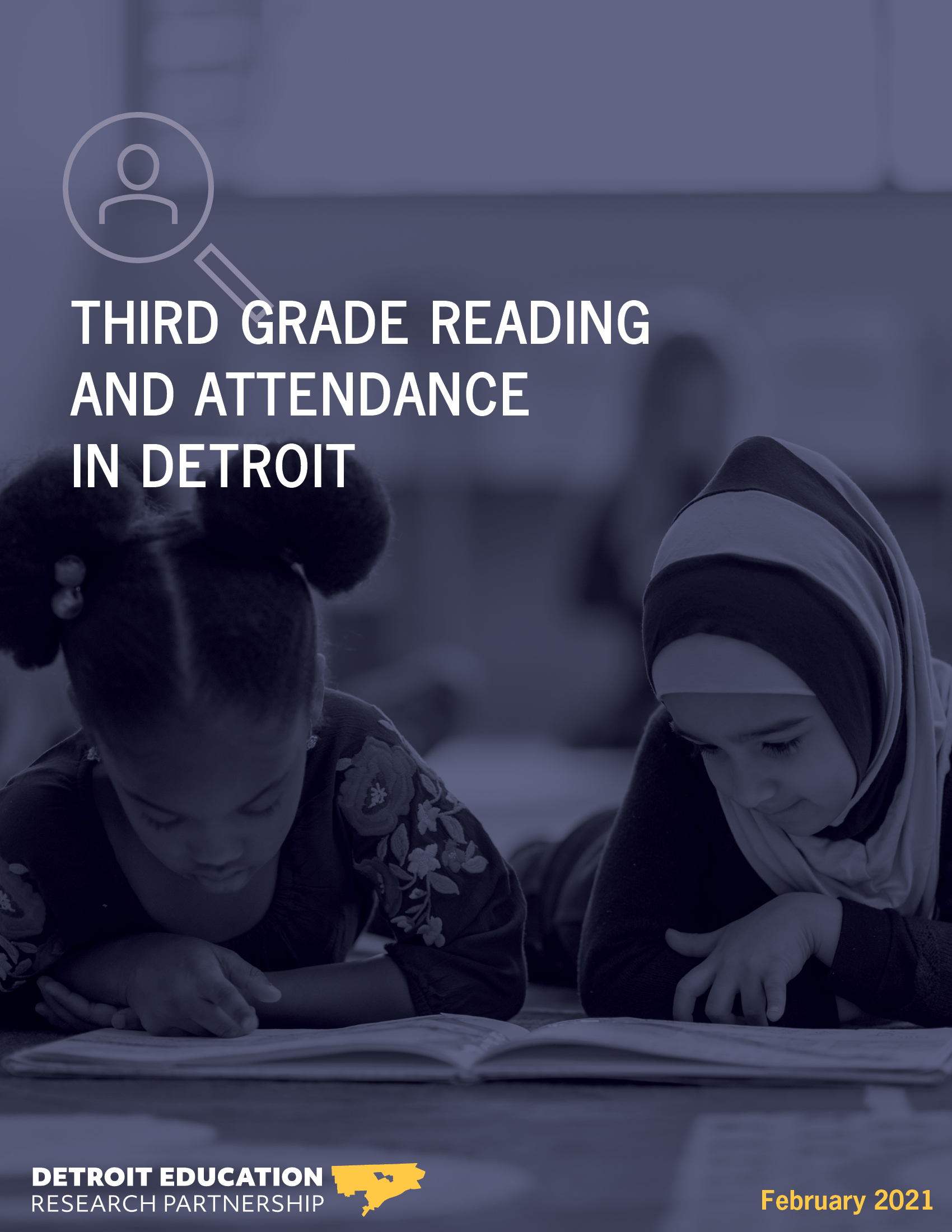
Why do Detroit Students Miss School? Implications for Returning to School
This report documents the reasons why Detroit students miss school, based on interviews with parents and high school students in 2020. Transportation was by far the most frequent and pervasive barrier to attendance that we heard from families. Yet, issues with getting to school were more complex than immediate access to transportation. They emerged from a combination of unreliable or inconsistent availability of transportation, weak social networks, parents’ work schedules, unsafe conditions, and more. Health issues, acute and chronic physical health issues in particular, but also mental health and parent health issues, created barriers to attendance. Parents expressed a strong understanding that missing school jeopardized students’ learning, and they went to great lengths to get their children to school. Parents also weighed serious trade-offs between attendance, safety, health, and family income, reflecting the unjust conditions they face.

Detroit Students’ Experiences During the Novel Coronavirus Pandemic
We interviewed 29 DPSCD high school students in May and June 2020 about their experiences with COVID-19, how often and in what ways they participated in distance learning, and what their perspectives were about school in the fall. This research brief highlights several key findings that have implications for how students can be supported both during and after the pandemic.

School Transportation Policies in Detroit
A patchwork of different school transportation policies exist in Detroit, with some schools offering traditional school busing, some offering shuttle-style buses, some offering subsidized public transportation, and many offering no transportation at all. This report documents the available school-based transportation for Detroit students in DPSCD and charter schools.

Attendance Throughout the Seasons in the Detroit Schools Community District
This study examines how changes in the seasons relate to student absenteeism in Detroit. The probability that a student will miss school was lowest in the Fall, higher in Winter and Spring, and the highest in Summer (June), with exceptionally high rates of absence in the last two weeks of school. Nearly 4,000 DPSCD students (about 7%) reached the threshold for chronic absence in the last two weeks of the school year. Heavy precipitation in the Winter was associated with a 5% increase in the probability that a student would be absent, but the effect of precipitation in the Fall and Spring was minimal. Weather had a stronger affect on chronically absent students than non-chronically absent students.
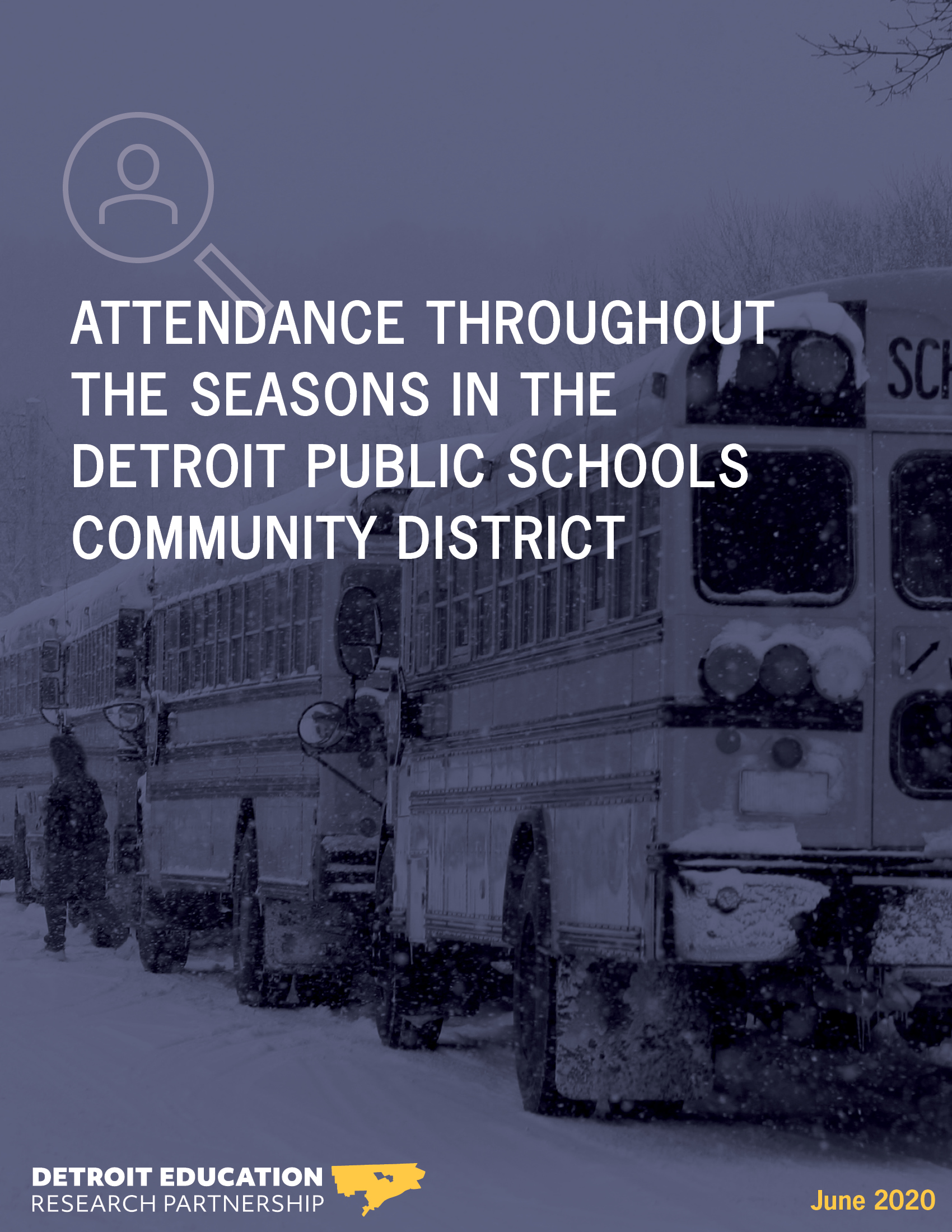
Detroit’s Uniquely Challenging Context for Student Attendance
Nationwide, long-term population change, asthma rates, poverty and unemployment rates, residential vacancy rates, violent crime rates, average monthly temperature, and racial segregation for a city’s greater metropolitan area are all significantly correlated with city-wide rates of chronic absenteeism. Detroit has the highest chronic absenteeism rate in the country (about 50%), and it has a uniquely challenging context for student attendance. Among cities with 500,000 or more residents, Detroit has the highest adult asthma rate (14%), unemployment rate (about 20%), poverty rate (about 38%), violent crime rate (about 20 per 1,000 people), and residential vacancy rate (27%). In addition, it has the greatest population loss since 1970 (about 50% decline), one of the lowest average monthly temperatures (about 49° F), and is among the most segregated major metropolitan areas in the country.

Geography, School Type, and High Student Attendance in Detroit
Detroit’s high attenders missed an average of just 2 days a year and performed significantly better on ELA and math standardized tests than non-high attenders, even those missing an average of 9 days a year. Nearly 70% of Detroit’s high attenders were enrolled in “high attendance schools,” or the top third of schools by attendance rate. Just 8% of high attenders were enrolled in “low attendance schools.” Most of Detroit’s high attenders were enrolled in “commuter” charter schools downtown and in the Detroit Public Schools Community District’s application- or exam-based schools, traveling farther on average than non-high attenders to enroll in school.

School Characteristics and Student Mobility in Detroit
Within- and between-year mobility was particularly high among Detroit resident students compared to other students in Metro Detroit. Students were less likely to make a within-year move if they attended a school categorized as having a high rating in organizational climate, as measured by the 5Essentials surveys. Rates of school-level chronic absence were associated with both within- and between-year mobility, suggesting that other elements of school organizational climate may influence student movement.

Exiting Detroit for School: Inequitable Choice Sets and School Quality
Students who exited Detroit for school had lower quality schools (test score performance, teacher and student stability, new teachers, discipline) in Detroit than students who stayed. Students who attended a non-Detroit school enrolled in schools that had, on average, higher discipline rates, more new teachers, lower teacher retention, and higher test scores than their choice sets in Detroit. The physical and cultural geography of students’ neighborhood choice sets varied dramatically across the city. Students who lived in neighborhoods where most of their neighbors went to just a few schools were less likely to exit.
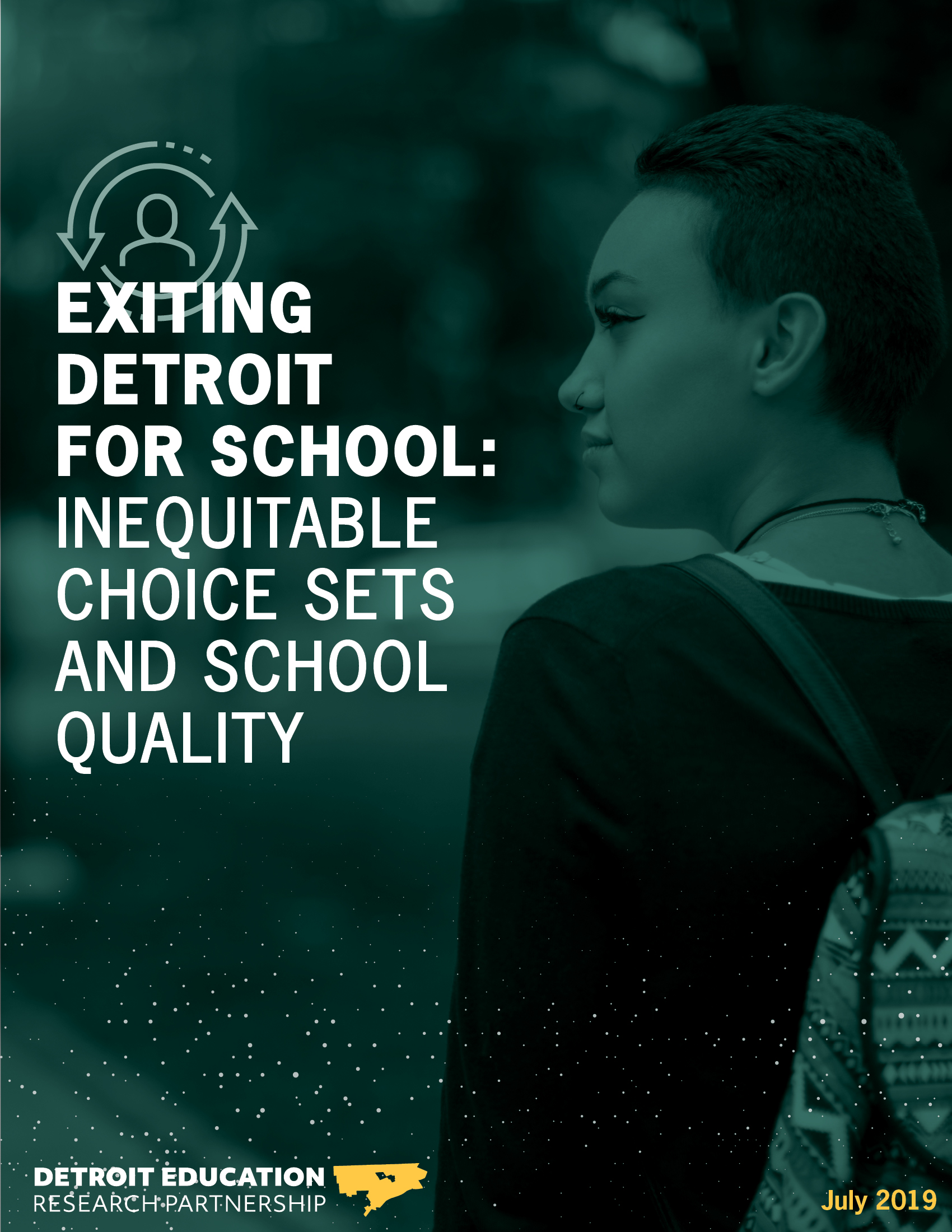
Student Exit, Mobility, and Attendance in Detroit
This comprehensive report documents Detroit students' school choices, attendance, and mobility as of 2017-18. Nearly a quarter of Detroit students attended a public school in the suburbs in 2017-18. Most had previously attended school in Detroit. Students were more likely to have attended school outside the city when they had fewer city schools near where they lived, raising important policy questions about school locations, closures, and access. Seventeen percent of Detroit students switched schools between school years when they were not in a transition year. Early elementary school and 9th grade students were most likely to be movers, and more than half of all non-routine moves were among students who did not change residence, suggesting that dissatisfaction, disciplinary pushout, or other school-level issues may be contributing to mobility. More than half of students who attended school in Detroit were chronically absent, missing 10% or more of the school year. Controlling for individual student characteristics, students were more likely to be chronically absent if they attended a school with high rates of student mobility, were new to the school, commuted further to get to school, and when they lived in neighborhoods with higher asthma rates.
